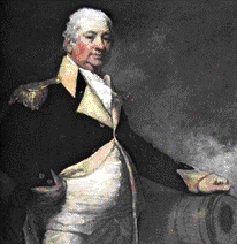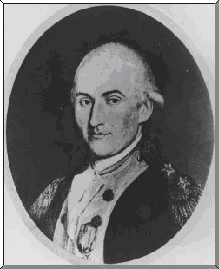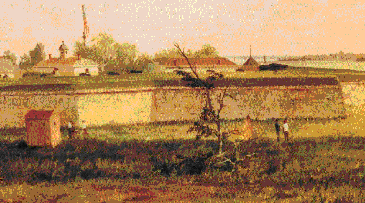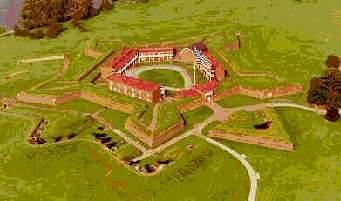On 9 May 1794, Congress established a Corps of Artillerists and Engineers in the U.S. Army. This action returned Engineers to the ranks of the Army for the first time in more than 10 years.
At the end of the Revolutionary War, several officers, including MG Louis Lebegue Duportail, Chief Engineer, argued for a peacetime Army with a single Corps of Artillerists and Engineers as was customary in many European countries. Congress not only did not support the proposal but also disbanded the bulk of the Army, including the Corps of Engineers with its chief engineer and companies of sappers and miners, in November 1783. By the following June, the surviving military establishment consisted solely of an infantry regiment and a company of artillery stationed at West Point.
As the new government under the Constitution was launched in 1789, Secretary of War Henry Knox revived the recommendation for a small Corps of Artillerists and Engineers. Congress delayed taking action until 1794 when war with Britain threatened. Suddenly there was an acute need to upgrade neglected coastal fortifications and construct new ones.
 |
|
 |
| Henry Knox |
|
Maj. Gen. Louis N. Duportail |
In March, Congress appropriated funds for fortifications work from Maine to Georgia, and Knox hired seven “temporary” engineers to carry out the work. The group included Pierre L’Enfant and Stephen Rochefontaine, both veterans of the Revolutionary War Corps of Engineers. Although employed by the War Department, these Engineers did not join the Army.
Knox took advantage of the situation and again urged Congress to approve the plan he and Duportail had advanced earlier. A corps combining artillerists and engineers, he argued, would provide the additional trained troops now needed to garrison the coastal fortifications. The new corps was to be commanded by a lieutenant colonel and to have four battalions, each commanded by a major and consisting of four companies.
Significantly, the legislation denoted officer candidates as cadets. The Secretary of War also was directed to provide the books, instruments, and apparatus necessary for the new Corps. These were the first steps toward establishment of a national military academy.
It took months for the Corps of Artillerists and Engineers to recruit the officers and troops needed to reach its authorized strength. Although international tensions eased in the latter half of 1794 and jeopardized the whole effort, Congress resolved to continue a seacoast defense program. By the end of the year, there were single company garrisons of artillerists and engineers at Fort Jay (New York); Fort Mifflin (Philadelphia); Fort Whetstone, later McHenry (Baltimore); and Fort Johnson (Charleston). The following February, Stephen Rochefontaine, one of the “temporary” Engineers, was commissioned a lieutenant colonel and took command of the Corps.
 |
 |
|
Fort Mifflin
|
Fort McHenry
|
The creation of a Corps of Artillerists and Engineers in 1794 assured that an engineering presence, established with the appointment of the Army’s first Chief Engineer in 1775, would continue in the new U.S. Army.
In 1798, war appeared likely with France, so Congress added a second regiment to the Corps. By the time Thomas Jefferson became president in 1801, it had become clear that the united Corps was not producing the desired well-educated, scientific body of Engineer officers. The short-lived experiment was ended. In 1802, Congress permanently established a separate Corps of Engineers and the U.S. Military Academy at West Point as the Nation’s first engineering school - see Vignette 15.
* * *
April 2001